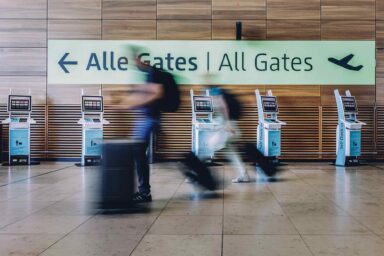So-called drug courts have been found to be a more effective and inexpensive way of dealing with those convicted of substance abuse-related crimes. But various barriers limit participation.
|
Listen To This Story
|
When Angela Blackwell was given the option of jail or substance abuse treatment, she chose the treatment and now credits that decision with turning around her life.
“I was homeless, facing 13 felonies, years in prison, and losing custody of my daughter,” Blackwell told a congressional subcommittee in recounting her experience. “That all changed when I was offered drug court.”
Drug courts provide court-supervised treatment in place of incarceration for those prosecuted for drug offenses. The policy, pioneered by the United States, is key to a gradual shift from punishment to treatment in addressing substance use disorders.
However, not everyone who is eligible is given the same choice as Blackwell — even though drug courts have proven to be highly effective.
Taxpayers save $6,000 per drug court participant on average, according to the National Association of Drug Court Professionals (NADCP). The programs also reduce recidivism by up to 58 percent. That means traditional parole and incarceration not only cost more but are more likely to impose future costs because they are less effective at preventing future prosecutions.
In spite of these documented benefits, employment scarcity and lack of access to stable housing and transportation keep the people most in need of drug court services from participating in these programs, a new Government Accountability Office (GAO) report has found.
A Formula for Success
One of the reasons why these programs are effective is the stringent requirements, aimed at achieving long-term sobriety, that come with drug court resources.
“I was given the accountability I desperately needed: random drug tests multiple times a week, access to public and private support services, and a spectrum of treatment services to ensure I would remain drug free,” Blackwell told Congress. “Even despite my missteps, no one in the program gave up on me, ensuring I couldn’t give up on myself.”
While treatment varies by court, GAO finds that all programs employ frequent, random testing at court designated sites. Courts also provide participants with contracts explaining their rights and responsibilities, which include court supervision for the duration of participation. Unlike other supervision programs, drug court supervision requires appearing before a judge no less than every two weeks for at least the first phase of the program.
The same conditions that make treatment successful, however, are the reason why some people never have the same choice.
“Treatment courts, like drug courts and veterans treatment courts, are on the front lines of saving lives, reuniting families, cutting crime, and saving money.” — Cook County Circuit Court Judge Neera Walsh
In a town where the only significant employment opportunity — commercial fishing — involves weeks-long stints at sea that court supervision cannot accommodate, GAO relates that one otherwise eligible individual opted for jail instead of treatment in order to have a job. People caught between demanding employment schedules and demanding treatment schedules have little option but to choose incarceration and forgo treatment.
Individuals who are prevented from participating in drug court programs by obstacles such as employment scarcity and lack of access to housing and transportation must choose options that are less effective for themselves and their communities.
“Treatment courts, like drug courts and veterans treatment courts, are on the front lines of saving lives, reuniting families, cutting crime, and saving money,” Cook County Circuit Court Judge Neera Walsh said in testimony to the House.
In Illinois, repeat arrests and prosecutions cost taxpayers more than $50,000 per incident, according to the Illinois Sentencing Policy Advisory Council (SPAC), and will cost the state $13 billion over five years if nothing is done.
These obstacles are especially burdensome for rural and tribal areas, which face special difficulties with substance abuse.
One court related to GAO that their county covers 1,200 square miles. Transportation across such a distance is challenging for participants to arrange, and drug court resources to do so are limited. One local court, appealing to its state for additional resources, was told that participants should use a ride share service, but there are none available in the court’s rural location.
Transportation issues leave courts in the position of relying on participants to give each other rides to treatment and testing facilities. Some courts provide additional services to mitigate these challenges, such as ride passes — where available — and resolution of fines and license suspensions.
To make matters worse, the people most vulnerable to substance-use disorders and to criminal prosecution are also those most likely to face steep barriers to entry. The report relates that some drug courts cannot accept homeless individuals into their programs, for example, as homelessness is not conducive to sobriety.
The Bureau of Justice Assistance (BJA), which is responsible for justice-related federal grants and provides technical assistance and no-cost training to drug courts, told GAO it is aware of these barriers. Its solicitation for 2022 grant applications included language encouraging adult drug courts to provide services like transitional recovery housing and peer support.
Resource expansion — an issue underlying all the challenges facing adult drug court programs — is a top priority for advocates. The GAO report provides areas where congressional intervention could save lives.
“Drug court gave me the tools I needed to enter a life of recovery,” Blackwell told lawmakers. “Drug court must be expanded to serve the more than one million addicted individuals in the justice system who, like me, desperately need this life-saving treatment.”





